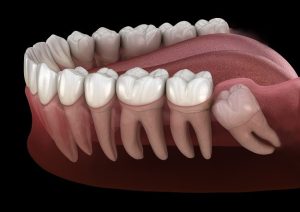Linear Algebra in Data Science In the dynamic and data-driven world of today, linear algebra has emerged as a fundamental tool in the arsenal of every data scientist. This article delves into the practical applications of linear algebra in the field of data science, offering insights and techniques that can elevate your data analysis skills to new heights.
Linear algebra, with its powerful concepts of vectors, matrices, and linear transformations, forms the backbone of numerous data science workflows. From machine learning algorithms to data visualization techniques, the principles of linear algebra are woven into the very fabric of data-driven decision-making. By mastering these essential linear algebra concepts, data scientists can unlock a deeper understanding of their data, uncover hidden patterns, and drive impactful business outcomes.
Throughout this article, we will explore the fundamental building blocks of linear algebra, including vectors and matrices, and dive into the core operations that form the foundation of data science applications. We will also delve into the role of linear algebra in solving systems of linear equations, analyzing eigenvalues and eigenvectors, and understanding the significance of linear transformations.
Whether you are a seasoned data scientist or someone new to the field, this article aims to provide you with a practical and insightful journey through the world of linear algebra in data science. By the end of this exploration, you will be equipped with the knowledge and techniques to leverage linear algebra as a powerful tool in your data-driven endeavors.
Key Takeaways
- Discover the fundamental role of linear algebra in data science applications
- Understand the concepts of vectors, matrices, and their core operations
- Explore the applications of linear algebra in solving systems of linear equations
- Delve into the significance of eigenvalues and eigenvectors in data analysis
- Learn about the importance of linear transformations and their impact on data science workflows
- Gain insights into the practical implementation of linear algebra techniques in machine learning algorithms
- Develop an appreciation for the interplay between linear algebra and data-driven decision-making
Understanding the Fundamentals of Linear Algebra
To harness the power of Linear Algebra Fundamentals in data science, it’s essential to have a firm grasp of the basic building blocks: vectors and matrices. These mathematical constructs form the foundation upon which more advanced linear algebra operations are built.
Vectors and Matrices: The Building Blocks
Vectors are one-dimensional arrays of numerical values, often denoted by lowercase letters with an arrow on top, such as a→ or x→. Matrices, on the other hand, are two-dimensional arrays of numbers, typically represented by capital letters like A or B. These basic structures allow us to represent and manipulate data in a wide variety of applications.
Exploring Basic Linear Algebra Operations
With a solid understanding of vectors and matrices, we can dive into the fundamental Linear Algebra Operations that form the backbone of data science. These include:
- Vector addition and scalar multiplication
- Matrix addition and scalar multiplication
- Matrix multiplication
- Calculating the transpose of a matrix
- Finding the inverse of a matrix (if it exists)
Mastering these basic operations is crucial for solving systems of linear equations, performing dimensionality reduction, and analyzing the relationships between data points in a wide range of data science applications.
“Linear algebra is the branch of mathematics concerning linear equations such as linear functions such as and their representations through matrices and vector spaces.”
By understanding the fundamentals of Linear Algebra Fundamentals, Vectors and Matrices, and Linear Algebra Operations, you’ll be well on your way to unlocking the full potential of linear algebra in data science.
Linear Algebra in Data Science
Linear algebra, a fundamental branch of mathematics, plays a crucial role in the field of data science. From data preprocessing to machine learning algorithm development, the principles and techniques of linear algebra are deeply intertwined with the various applications of data science. In this section, we’ll explore how linear algebra concepts are employed in the realm of data analysis and decision-making.
One of the primary ways linear algebra is utilized in data science is through matrix operations. Matrices, which represent collections of data in a tabular format, are the foundation for many data manipulation and transformation tasks. Operations such as matrix addition, subtraction, multiplication, and inversion are integral to processes like data normalization, feature engineering, and dimensionality reduction.
Moreover, the concepts of eigenvalues and eigenvectors derived from linear algebra are essential for data analysis and modeling. These mathematical constructs enable the identification of patterns, trends, and underlying structures within complex datasets, making them invaluable for tasks like principal component analysis (PCA) and spectral clustering.
Linear transformations, another key linear algebra technique, find application in data science when dealing with spatial data or high-dimensional feature spaces. By understanding and manipulating linear transformations, data scientists can effectively reduce the dimensionality of their datasets, making them more manageable and easier to analyze.
In summary, linear algebra in data science is a powerful tool that enables data professionals to extract meaningful insights, uncover hidden patterns, and develop innovative algorithms that drive business decisions and solve complex problems. As the field of data science continues to evolve, the linear algebra techniques used in this discipline will only become more essential and versatile.
Solving Systems of Linear Equations
In the realm of data science, the ability to solve systems of linear equations is a crucial skill. These equations lie at the heart of many data analysis techniques, allowing us to unravel complex relationships and make informed decisions based on the insights they provide.
Gaussian Elimination and its Applications
One of the fundamental methods for solving systems of linear equations is the Gaussian elimination technique. This powerful algorithm methodically transforms a system of linear equations into an equivalent system with a simpler structure, ultimately yielding the unique solution(s).
The applications of Gaussian elimination in data science are vast and varied. From optimizing resource allocation to making strategic choices based on intricate data inputs, this method proves invaluable. By systematically reducing the complexity of linear equation systems, Gaussian elimination allows data analysts to uncover hidden patterns, identify optimal scenarios, and drive data-driven decision-making.
| Technique | Description | Applications in Data Science |
|---|---|---|
| Systems of Linear Equations | A set of linear equations with multiple variables, where the goal is to find the values of the variables that satisfy all equations simultaneously. | Optimizing resource allocation, solving complex data-related problems, and making informed decisions based on intricate data inputs. |
| Gaussian Elimination | A systematic method for solving systems of linear equations by transforming the original system into an equivalent system with a simpler structure, ultimately yielding the unique solution(s). | Uncovering hidden patterns in data, identifying optimal scenarios, and driving data-driven decision-making. |
By mastering the techniques of solving systems of linear equations, data scientists can unlock a world of possibilities in their quest to extract valuable insights from complex data sets. The Gaussian elimination method stands as a cornerstone in this endeavor, providing a reliable and efficient approach to unraveling the intricacies of linear algebra in data analysis.
“Solving systems of linear equations is not just a mathematical exercise, but a fundamental tool for unlocking the true potential of data in the hands of skilled data scientists.”
Eigenvalues and Eigenvectors in Data Analysis
In the world of data analysis, understanding the concepts of eigenvalues and eigenvectors is crucial. These linear algebra principles play a vital role in uncovering hidden patterns, extracting meaningful features, and gaining valuable insights from complex datasets.
Eigenvalues and eigenvectors are mathematical entities that describe the watitoto underlying structure of a matrix. Eigenvalues represent the scale factors that transform a vector when multiplied by a matrix, while eigenvectors are the directions in which a matrix acts without changing the direction of the vector. These concepts are particularly useful in data science, where they are applied in techniques like principal component analysis (PCA) and dimensionality reduction.
PCA, for instance, leverages eigenvalue decomposition to identify the most significant directions of variation in a dataset. By identifying the eigenvectors with the largest eigenvalues, PCA can capture the essential features of the data, enabling data scientists to visualize and analyze high-dimensional information in a more manageable and interpretable way.
| Application | Eigenvalues and Eigenvectors |
|---|---|
| Principal Component Analysis (PCA) | Identifying the most significant directions of variation in a dataset |
| Dimensionality Reduction | Reducing the number of features in a dataset while retaining the most important information |
| Image and Signal Processing | Extracting relevant features and compressing data |
| Recommender Systems | Identifying latent factors that drive user preferences |
By mastering the concepts of eigenvalues and eigenvectors, data analysts can unlock the full potential of linear algebra in their data analysis workflows. These fundamental linear algebra principles empower data scientists to uncover hidden insights, streamline data processing, and drive more informed decision-making.
“Eigenvalues and eigenvectors are the keys to unlocking the power of linear algebra in data analysis. They enable us to uncover the underlying structure of complex datasets and extract the most meaningful features for decision-making.”
Linear Transformations and Their Significance
In the realm of data science, understanding the power of linear transformations is crucial. These transformations, such as rotations, reflections, and projections, play a vital role in various data-driven analyses and applications. By harnessing the principles of linear algebra, we can unlock the potential of these transformations to tackle complex challenges.
Dimensionality Reduction and Principal Component Analysis
One of the most prominent applications of linear transformations in data science is dimensionality reduction. As datasets grow increasingly complex, with numerous features or variables, the need to extract the most relevant information becomes paramount. Principal Component Analysis (PCA) is a powerful technique that leverages linear transformations to identify the principal components, or the directions of maximum variance, within the data.
PCA allows us to project high-dimensional data onto a lower-dimensional space, preserving the essential characteristics of the original dataset. This process not only reduces the computational burden but also enhances our ability to visualize and interpret the data more effectively. By focusing on the most significant features, PCA helps us uncover hidden patterns, identify key drivers, and make more informed decisions.
| Technique | Description | Benefit |
|---|---|---|
| Linear Transformations | Transformations such as rotations, reflections, and projections | Unlock the potential of data-driven analyses and applications |
| Dimensionality Reduction | Extracting the most relevant information from complex datasets | Enhance computational efficiency and improve data interpretation |
| Principal Component Analysis (PCA) | Identify the principal components, or directions of maximum variance, within the data | Reduce data complexity while preserving essential characteristics |
By mastering the concepts of linear transformations and their applications in dimensionality reduction and Principal Component Analysis, data scientists can unlock new possibilities for data-driven decision-making and problem-solving.
Linear Algebra in Machine Learning Algorithms
Linear algebra is a fundamental pillar in the realm of machine learning algorithms. From linear regression to logistic regression and principal component analysis (PCA), the principles of linear algebra are deeply woven into the mathematical foundations of these widely-adopted techniques. Mastering the concepts of vectors, matrices, and their associated operations empowers data scientists to harness the power of linear algebra in developing and implementing robust machine learning models.
One of the prime examples of linear algebra’s influence in machine learning is linear regression. This algorithm relies on finding the best-fit line or hyperplane that minimizes the distance between the observed data points and the predicted values. The process of calculating the regression coefficients involves matrix operations, such as matrix inversion and matrix multiplication, which are essential linear algebra techniques.
Similarly, logistic regression, a cornerstone of binary classification problems, leverages linear algebra to derive the decision boundary that separates the classes. Eigenvalue decomposition and singular value decomposition (SVD) are other linear algebra tools that play a crucial role in dimensionality reduction techniques like principal component analysis (PCA), which are widely used in data exploration and feature engineering.
By understanding the linear algebra principles that underpin these machine learning algorithms, data scientists can gain a deeper appreciation for the mathematical foundations of their models, leading to more informed decisions, improved model interpretability, and enhanced problem-solving capabilities in the realm of Data Science Applications.
“Linear algebra is the language of machine learning. Mastering its concepts is crucial for any data scientist who aspires to design and implement effective machine learning algorithms.”
As the applications of Machine Learning Algorithms continue to expand across diverse industries, the importance of Linear Algebra in Machine Learning only grows stronger. By delving into the linear algebra fundamentals and their practical implications, data professionals can unlock new possibilities in solving complex problems and driving meaningful insights from data.
Linear Algebra in Data Science: A Practical Approach
In the world of data science, linear algebra has emerged as a fundamental tool for tackling complex analytical challenges. This section delves into the practical applications of linear algebra, empowering data scientists to enhance their data analysis skills and drive meaningful insights.
Exploring the symbiotic relationship between linear algebra and data science, we’ll uncover how these principles can be leveraged to streamline data processing, optimize visualization techniques, and develop robust predictive models. From mastering matrix operations to understanding the role of eigenvalues and eigenvectors, this section equips you with the knowledge to harness the power of Linear Algebra in Data Science.
One of the key focus areas will be on the practical implementation of linear algebra-based solutions using popular data science tools and programming languages. Through step-by-step guidance and hands-on examples, you’ll gain the confidence to apply these Practical Techniques in your own data science workflows.
Whether you’re a seasoned data analyst or an aspiring data enthusiast, this section will provide you with a comprehensive understanding of how Linear Algebra in Data Science can enhance your Data Analysis Skills and unlock new levels of insight and innovation.
“Linear algebra is the language of data science. Mastering its principles is the key to unlocking the full potential of your data.”
Join us as we explore the transformative power of linear algebra in the realm of data science, paving the way for more informed decision-making, data-driven solutions, and groundbreaking discoveries.
Numerical Stability and Computational Considerations
As data scientists delve deeper into the world of linear algebra, they must be mindful of numerical stability and computational considerations. Numerical stability is a critical factor when dealing with linear algebra operations, particularly when working with ill-conditioned matrices. These matrices can lead to significant rounding errors and instability in your calculations, potentially compromising the accuracy and reliability of your data science projects.
Dealing with Ill-Conditioned Matrices
Ill-conditioned matrices are matrices that are close to being singular, meaning they have a very small determinant and are susceptible to numerical instability. This can happen when the matrix elements are very large or very small in magnitude, or when the matrix is nearly singular. In such cases, even small changes in the input data can lead to disproportionately large changes in the output, making it challenging to obtain accurate and consistent results.
To address ill-conditioned matrices, data scientists can employ various techniques, such as regularization, pivoting, and the use of specialized algorithms like singular value decomposition (SVD) or QR decomposition. These methods help to mitigate the effects of numerical instability and ensure that your linear algebra computations remain robust and reliable, even in the face of challenging matrix conditions.
FAQ
What is the role of linear algebra in data science?
Linear algebra is a fundamental mathematical discipline that underpins many of the core concepts and techniques used in data science. It provides the essential tools for working with vectors, matrices, and linear transformations, which are crucial for tasks such as data preprocessing, dimensionality reduction, and the development of machine learning algorithms.
How are vectors and matrices used in data science?
Vectors and matrices are the building blocks of linear algebra and are extensively used in data science. Vectors represent individual data points or observations, while matrices allow for the storage and manipulation of large datasets. Understanding how to perform basic operations on vectors and matrices, such as addition, scalar multiplication, and matrix multiplication, is essential for working with data in a meaningful way.
What is the importance of solving systems of linear equations in data science?
Solving systems of linear equations is a crucial skill in data science, as it allows for the optimization of resource allocation, the analysis of complex data inputs, and the development of predictive models. The Gaussian elimination method is a widely used technique for solving these systems and has numerous applications in data-driven decision-making.
How are eigenvalues and eigenvectors used in data analysis?
Eigenvalues and eigenvectors are linear algebra concepts that are particularly valuable in data analysis. They can be used to uncover underlying patterns, extract important features, and gain valuable insights from complex datasets. Techniques like eigenvalue decomposition and principal component analysis (PCA) leverage these concepts to reduce data dimensionality and identify the most significant variables in a dataset.
What is the role of linear transformations in data science?
Linear transformations, such as rotations, reflections, and projections, play a crucial role in data science, particularly in the context of dimensionality reduction. By understanding how linear transformations can be applied to data, data scientists can use techniques like principal component analysis (PCA) to manage high-dimensional data and extract the most relevant features for analysis.
How is linear algebra used in machine learning algorithms?
Linear algebra is fundamental to the development and implementation of various machine learning algorithms. Concepts like matrix operations, eigenvalue decomposition, and linear transformations are integral to algorithms such as linear regression, logistic regression, and principal component analysis (PCA). Understanding the linear algebra foundations of these techniques is essential for building and deploying effective machine learning models.
How can data scientists ensure numerical stability when working with linear algebra in data science?
Maintaining numerical stability is crucial when working with linear algebra in data science. Ill-conditioned matrices can lead to inaccurate results and unreliable conclusions. Data scientists need to be aware of these computational considerations and employ strategies for handling ill-conditioned matrices, such as using appropriate numerical methods and regularization techniques, to ensure the validity and reliability of their data-driven insights.


























